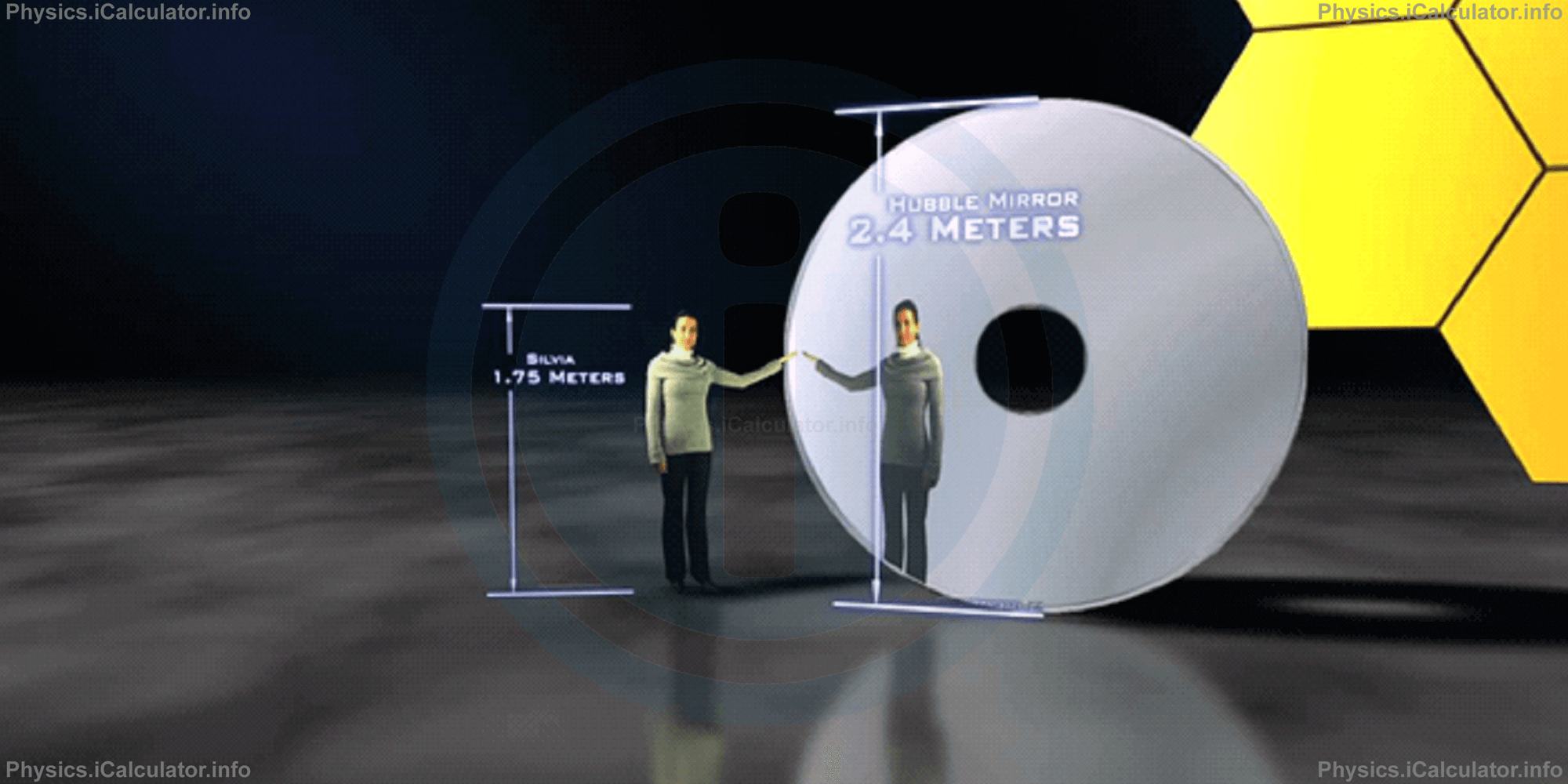Menu
Physics Lesson 22.7.3 - Space Telescope
Please provide a rating, it takes seconds and helps us to keep this resource free for all to use
Welcome to our Physics lesson on Space Telescope, this is the third lesson of our suite of physics lessons covering the topic of Astronomical Measurements and Observations, you can find links to the other lessons within this tutorial and access additional physics learning resources below this lesson.
Space Telescope
As explained earlier, the technology of artificial satellites allows scientists to use space telescopes to avoid atmospheric turbulences. In this way, they are able to receive images that are impossible to receive directly on the Earths surface. The well-known Hubble telescope, launched into space in 1990, operates in the visible and UV spectrum. The main part of this telescope consists on a spherical mirror of 2.4 m diameter, as shown in the photo below.

Another technology used in this regard are the spatial probes. These cosmic machines carry on-board all the necessary tools required for the observation and analysis of celestial objects. They usually make a one-way journey from the Earth to other celestial bodies, they don't return back to the Earth so they continiously transmit the images and videos obtained during their flight. This occurs for several year until they are lost in the space and cannot send information back to the laboratories on Earth.
You have reached the end of Physics lesson 22.7.3 Space Telescope. There are 3 lessons in this physics tutorial covering Astronomical Measurements and Observations, you can access all the lessons from this tutorial below.
More Astronomical Measurements and Observations Lessons and Learning Resources
Whats next?
Enjoy the "Space Telescope" physics lesson? People who liked the "Astronomical Measurements and Observations lesson found the following resources useful:
- Space Telescope Feedback. Helps other - Leave a rating for this space telescope (see below)
- Cosmology Physics tutorial: Astronomical Measurements and Observations. Read the Astronomical Measurements and Observations physics tutorial and build your physics knowledge of Cosmology
- Cosmology Revision Notes: Astronomical Measurements and Observations. Print the notes so you can revise the key points covered in the physics tutorial for Astronomical Measurements and Observations
- Cosmology Practice Questions: Astronomical Measurements and Observations. Test and improve your knowledge of Astronomical Measurements and Observations with example questins and answers
- Check your calculations for Cosmology questions with our excellent Cosmology calculators which contain full equations and calculations clearly displayed line by line. See the Cosmology Calculators by iCalculator™ below.
- Continuing learning cosmology - read our next physics tutorial: Orientation in the Sky and Constellations
Help others Learning Physics just like you
Please provide a rating, it takes seconds and helps us to keep this resource free for all to use
We hope you found this Physics lesson "Astronomical Measurements and Observations" useful. If you did it would be great if you could spare the time to rate this physics lesson (simply click on the number of stars that match your assessment of this physics learning aide) and/or share on social media, this helps us identify popular tutorials and calculators and expand our free learning resources to support our users around the world have free access to expand their knowledge of physics and other disciplines.